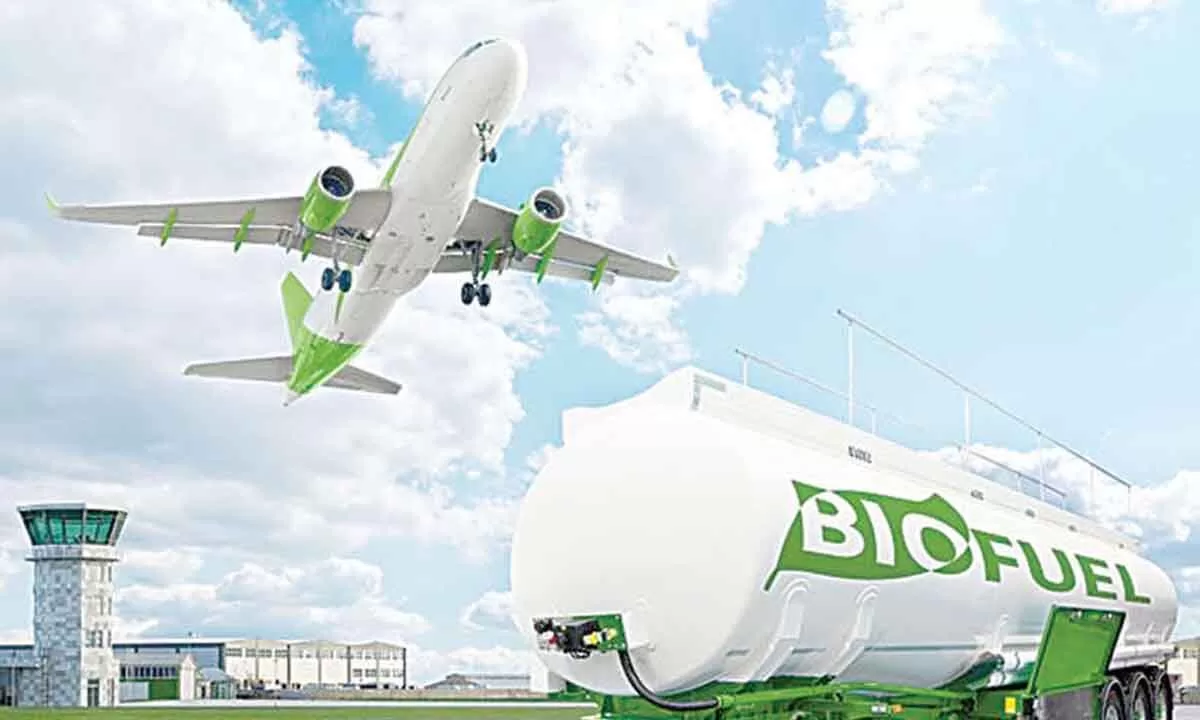Sustainableaviation gasoline (SAF) accounted for a few for every cent of all renewable fuels made, with 97 for each cent of renewable fuel generation heading to other sectors. The SAF generation is predicted to triple to 1.875 billion liters (1.5Mt), this yr accounting for .53 per cent of aviation’s fuel need and 6 per cent of renewable gasoline ability. In 2023, SAF volumes arrived at about 600 million liters (.5Mt), double the 300 million liters (.25 Mt) developed in 2022.
The compact share of SAF output as a proportion of all round renewable gas is mostly thanks to the new ability coming on the internet in 2023 getting allocated to other renewable fuels.
“The doubling of SAF output in 2023 was encouraging as is the expected tripling of output envisioned in 2024. But even with that spectacular expansion, SAF as a portion of all renewable gas creation will only mature from 3 for every cent this 12 months to 6 for every cent in 2024. This allocation limitations SAF supply and retains charges large.
Aviation demands between 25 for every cent and 30 per cent of renewable gas manufacturing capacity for SAF. At those stages aviation will be on the trajectory wanted to attain internet zero carbon emissions by 2050. Until finally this sort of concentrations are reached, we will continue lacking substantial chances to progress aviation’s decarbonization.
It is authorities coverage that will make the difference. Governments ought to prioritize guidelines to incentivize the scaling-up of SAF manufacturing and to diversify feed shares with those people out there regionally,” mentioned Willie Walsh, IATA Director Normal.
International forecast for renewable fuel creation (not just SAF) exhibits a regional distribution of creation. At current we estimate a prospective output of 63 Mt from renewable gasoline assignments which have slated SAF as a opportunity output. This should really increase in the coming several years, but it is also genuine some of these tasks will fall short. If we assume a 30 for every cent generation channeled toward SAF (an assumption which is aligned to optimum refining for the HEFA pathway) the outputs could in fact match today’s 2030 projections on the regional procedures slide, about 10 Mt in North The us, about 5 Mt in Europe, about 2 Mt in APAC.
When prepared potential typically matches forecast demand as of currently, genuine SAF output will greatly count on supportive procedures vs. other renewable fuels.
If a place has incentives on renewable diesel and not for SAF, a lot more of the output from the producer will be channeled to the renewable diesel and not to SAF for aviation. We will need balanced procedures for renewable fuels to make sure a reasonable output of SAF.
So significantly the concentrate has been on demand vs output to 2030. Aviation’s motivation for internet zero carbon emissions by 2050 signifies we will need to have about 20 occasions as considerably SAF in 2050 compared to 2030.
SAF is the most significant lever for aviation’s changeover to web zero carbon emissions. But this important remedy for aviation also gives broader advantages positively impacting sustainability, financial prospect and electrical power protection. Jobs that are aimed at aggregating wastes or re-cultivating degraded land have many optimistic socio-financial consequences which become a big pull element for attracting institutional and critically, govt expenditure. Governments must be encouraged and supportive of assignments because of the likely to: Establish sustainable supply chains at the regional level Make of regional income and employment Assist land restoration and/or regeneration Endorse and foster biodiversity and Aiding the advancement of localized energy independence and safety.
In India, Praj has made a proprietary technological innovation to procedure agricultural feed shares for the generation of SAF that can be blended with aviation turbine gasoline (ATF).
Pramod Chaudhari, government chairman, Praj Industries said, “Inauguration of SAF demonstration facility is still yet another milestone in Praj’s pursuit of energy changeover via Bioeconomy. A short while ago, we collaborated with IOCL and AirAsia India to effectively fly India’s to start with commercial passenger flight with 1 for every cent SAF created at our bench scale setup that was blended with ATF.
We believe in India’s possible to be a hub for supplying SAF for the World-wide Aviation Industry and we stand committed to encouraging create SAF generation capacities.
It may well be mentioned that all around 3 per cent of all GHG emissions all over the world are at the moment attributable to aviation. Except controlled, usually the emissions may well zoom to as considerably as 22 for every cent of global greenhouse gas emissions.
